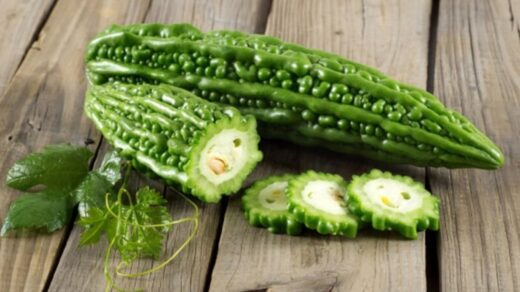The 3 Gunas in Ayurveda: Discover the Right Foods for You
In Ayurveda, the concept of the Three Gunas (basic qualities of the universe) is central to understanding how mental, physical, and emotional states are interrelated. These Gunas—Sattva, Rajas, and Tamas—are seen as the fundamental qualities that shape the world around us, and everything in the universe, including food, consists of a unique combination of these three energies.
The word “Guna” is derived from Sanskrit and can be translated as “what binds,” representing the fundamental qualities that bind and shape reality. It is also associated with terms like “string,” “thread,” “quality,” “attribute,” “virtue,” and “excellence.”
In Ayurveda, these three qualities—Sattva, Rajas, and Tamas—are present in all individuals, though the proportions of each vary from person to person, influencing our temperament, health, and life experiences.
The Three Gunas in the Ayurveda Diet
Maintaining optimal physical and mental health begins with promoting the Sattva Guna, the quality of balance and clarity. To support this, practices like meditation and good nutrition are essential.
When combined with Yoga, these practices help calm the Rajas Guna (the quality of activity and restlessness) and reduce the negative influences of the Tamas Guna (the quality of inertia and darkness). In this post, you will learn key insights on the most suitable diets for each Guna.
It’s crucial to avoid the Tamasic diet, as it enhances the most detrimental aspects of our nature. Why maintain a diet that fosters negativity and imbalance in the body and mind? Instead, focus on nourishing, vibrant foods that support your well-being.
1. The Sattvic Diet: A Path to Mental and Physical Wellness
The Sattvic diet, as outlined in Ayurveda, is the ideal dietary approach for enhancing health and well-being. This diet is designed to promote balance, improve mental clarity, and support physical health. It is based on foods that are considered pure, natural, and life-affirming, fostering vitality and longevity.
1. Core Principles of the Sattvic Diet
- Promotion of Purity and Balance: Sattvic foods are selected for their ability to cleanse and purify the body, promoting harmony between the body and mind. This diet is not only about nourishing the body but also about sustaining mental peace and spiritual clarity.
- Natural, Fresh, and Organic: The essence of the Sattvic diet is consuming natural, organic foods that are minimally processed. Freshness is key, with food ideally prepared through methods such as steaming, boiling, or eating raw.
- Mindful Eating Practices: Sattvic eating emphasizes eating with awareness and gratitude. The approach is rooted in mindful consumption, where the focus is on savoring and appreciating food’s energetic and healing qualities.
2. Key Components of a Sattvic Diet
Whole Grains:
- Grains like quinoa, rice, oats, millet, and corn provide essential carbohydrates and amino acids, helping the body synthesize proteins.
- These grains are rich in fiber and nutrients, supporting digestive health and sustained energy.
Fruits and Vegetables:
- Fresh fruits and vegetables are essential in a Sattvic diet, offering vitamins, minerals, and fiber that nourish the body.
- They contain natural alkaline substances that help cleanse the blood and support overall detoxification.
- In addition to whole fruits, fruit juices also contribute to health, especially when freshly made, aiding in hydration and vitality.
Legumes and Pulses:
- Legumes such as lentils, beans, and chickpeas are vital protein sources in the Sattvic diet, supporting muscle repair, growth, and overall health.
- They are also rich in fiber, aiding digestion and maintaining a healthy gut microbiome.
3. Dairy in the Sattvic Diet: Moderation and Mindfulness
Dairy’s Role in Ayurveda:
- Dairy products like milk, butter, and ghee are considered nourishing in moderation. They provide healthy fats, essential vitamins, and minerals that support bone health and energy.
- However, overconsumption of dairy can lead to excess mucus production, which may hinder proper breathing and digestion.
Moderation is Key:
- Ayurvedic practices suggest that dairy should be consumed in balanced quantities to prevent any negative effects on the body and mind.
- Choosing high-quality, organic dairy products ensures that the body receives the best nutrients from these foods without adverse effects.
4. Natural Sweeteners and Their Benefits
Honey, Molasses, and Maple Syrup:
- In place of refined sugar, the Sattvic diet encourages natural sweeteners like honey, molasses, and maple syrup. These sweeteners are less processed and provide additional nutrients and antioxidants.
- They support healthy digestion and blood sugar regulation when used in moderation.
Health Benefits of Natural Sweeteners:
- These natural alternatives not only add sweetness to food but also offer medicinal benefits, such as soothing the throat and enhancing digestion.
- They are known to have a grounding and nourishing effect on the body, making them ideal for a Sattvic diet.
5. Nuts and Seeds: Nutrient-Dense Additions
Nutritional Powerhouses:
- Nuts like almonds, walnuts, and cashews are packed with healthy fats, protein, and essential minerals, such as magnesium and vitamin E.
- These nutrient-dense foods help support brain function, heart health, and maintain healthy skin.
Digestive and Emotional Support:
- Nuts and seeds also provide grounding energy, which is believed to calm the nervous system and aid in emotional stability.
- Consuming them in moderation can help maintain balance in the body and mind, supporting overall well-being.
6. The Role of Spices in the Sattvic Diet
Enhancing Digestion and Flavor:
- Spices play a crucial role in the Sattvic diet, not just for flavor but for their digestive and healing properties. Common Sattvic spices include turmeric, cumin, coriander, and ginger.
- These spices stimulate digestion, promote circulation, and help detoxify the body by improving liver function.
Spiritual and Medicinal Qualities:
- Beyond their physical benefits, many spices in the Sattvic diet are also used for their spiritual and emotional properties. For example, cardamom and saffron are believed to elevate mood and mental clarity, contributing to an overall sense of peace and contentment.
7. The Impact of a Sattvic Diet on Mind and Body
Mental Clarity and Emotional Well-being:
- A Sattvic diet is known for its positive effects on mental health. By nourishing the body with pure, natural foods, it helps improve mood, focus, and emotional stability.
- The balance achieved through such a diet supports mindfulness, stress reduction, and inner peace.
Long-Term Health and Longevity:
- By focusing on foods that promote detoxification, balance, and nourishment, the Sattvic diet contributes to longer, healthier lives. It strengthens immunity, improves digestion, and enhances overall vitality.
2. The Rajastic Diet: Fueling Energy and Activity
The Rajastic diet, derived from the Ayurvedic principles of Rajas, focuses on stimulating the mind and body, promoting high levels of energy and activity. While it may be useful for those engaged in physical exertion, it is important to note that the foods included in the Rajastic diet are often intense, stimulating, and sometimes harsh in nature. This diet is designed for individuals with active and restless personalities, often marked by emotional fluctuations and impulsive behaviors.
1. Understanding the Rajastic Personality and Its Connection to Food
- Active and Restless Nature: People with a Rajastic personality are characterized by constant movement and restlessness. They tend to be highly energetic, driven by passion, and often react impulsively. This type of individual thrives on excitement and challenge but may struggle with emotional instability.
- Emotional and Mental Imbalance: Due to their heightened activity levels and tendency to act on impulse, individuals with a Rajastic personality may experience mood swings, agitation, and emotional volatility. The Rajastic diet, although it provides energy, can further contribute to these emotional fluctuations if not balanced properly.
2. Characteristics of Rajastic Foods
Stimulating and Intense Flavors:
- Bitter, Sour, and Spicy Foods: Rajastic foods are typically characterized by strong, pungent flavors, including bitterness, sourness, saltiness, and spice. These flavors are meant to energize and stimulate the senses, but they can also agitate the digestive system and emotions if consumed excessively.
- Exciting and Overpowering: Foods in the Rajastic diet, like garlic, onion, and spicy peppers, can invoke strong physical reactions, encouraging the body to stay active and alert. However, overindulgence in these foods can lead to irritability and mental overstimulation.
Highly Stimulating Foods:
- Caffeinated Beverages: Coffee and tea are prime examples of Rajastic foods. Both beverages provide a quick energy boost, increase alertness, and promote mental clarity. However, too much caffeine can lead to nervous tension, restlessness, and sleep disturbances.
- Exciting Foods: The Rajastic diet often includes foods that excite the senses, such as heavily spiced dishes, fried foods, and intense flavors that invigorate the body but may also fuel excessive desire or irritability.
3. Psychological and Emotional Effects of Rajastic Foods
Heightened Sensitivity and Emotional Instability:
- Rajastic foods are believed to exacerbate emotions such as anger, greed, and lust. Because these foods stimulate the senses and increase physical energy, they can sometimes trigger emotional outbursts and a lack of control, leading to mood swings or impulsive actions.
- Consuming too many Rajastic foods may create a sense of imbalance in both the body and the mind, intensifying negative emotions like frustration or impatience.
Fomenting Aggression and Impulsivity:
- According to Ayurvedic teachings, Rajastic foods are associated with the qualities of Rajas, which can lead to increased aggression, impulsive behavior, and conflict. The stimulating nature of these foods can foster desires and attachments, potentially fostering environments of competition or strife.
- Excessive consumption of such foods may lead to restlessness or aggression, creating a heightened sense of competition and desire for power or control, which can contribute to disputes and misunderstandings.
4. Foods Commonly Found in the Rajastic Diet
Garlic and Onion:
- Both garlic and onion are considered powerful Rajastic foods due to their strong, pungent flavors. They are often used in dishes to provide flavor and stimulate the digestive system. While they can promote heart health and digestive function, they may also increase heat in the body, leading to potential irritability.
Radish:
- Radish is a typical example of a bitter and spicy vegetable found in Rajastic diets. Its sharp flavor can stimulate digestion but may also induce heat, leading to heightened emotions such as irritability if consumed in excess.
Caffeinated Beverages (Coffee and Tea):
- As natural stimulants, coffee and tea are common in the Rajastic diet. These beverages increase alertness and physical energy but can contribute to an overstimulated nervous system, causing anxiety or restlessness when consumed too frequently.
Spicy Foods:
- Hot, spicy foods, such as chili peppers and curry, are also part of the Rajastic diet. These foods stimulate the digestive system and can increase the body’s internal heat. While they may boost energy and metabolism, they can also provoke irritability or emotional imbalance in sensitive individuals.
5. Balancing the Rajastic Diet for Well-Being
- Moderation is Key: While Rajastic foods can be beneficial for those needing energy or experiencing physical exertion, it is essential to consume them in moderation. Overconsumption can lead to emotional instability, increased stress, and health issues related to the digestive system and nervous system.
- Combination with Sattvic Foods: For a balanced approach, Rajastic foods can be complemented by Sattvic foods. A mix of the pure, nourishing qualities of Sattvic foods with the stimulating nature of Rajastic foods can help maintain emotional and physical equilibrium.
- Mindful Consumption: Practicing mindfulness while eating Rajastic foods can help prevent negative emotional reactions. Being aware of how food affects mood and energy can assist in maintaining control and emotional stability.
The Tamasic Diet: A Hindrance to Vitality and Well-being
The Tamasic diet, rooted in the concept of Tamas in Ayurveda, is considered detrimental to both physical and mental health. Foods categorized as Tamasic tend to create lethargy, emotional numbness, and a lack of motivation. People who consume a Tamasic diet often experience fatigue, depression, and a disconnection from their spiritual and emotional potential. Acknowledging and eliminating Tamasic foods from one’s diet is a key step toward achieving overall health and vitality.
1. Characteristics of Tamasic Foods
Devoid of Vitality:
- Tamasic foods are often devoid of life energy, meaning they lack the nutrients and qualities that support mental and physical vitality. These foods typically contribute to sluggishness, dullness, and an overall sense of heaviness, both physically and mentally.
- These foods can lead to a lack of motivation and an inability to concentrate, resulting in emotional and mental stagnation.
Foods That Promote Inactivity:
- Foods that are heavy, overly processed, or excessively stale can induce feelings of laziness and lethargy. They do not provide the necessary nutrients to fuel the body’s optimal function, leading to a general sense of depletion.
2. Common Tamasic Foods and Their Effects
Meat and Fish:
- Both meat and fish are considered Tamasic because they are heavy, difficult to digest, and associated with negative qualities like aggression and attachment. Consuming these foods can lead to a sense of heaviness and sluggishness, both in body and mind.
- The act of consuming animal products is also believed to contribute to a lack of compassion and mindfulness, further promoting negative emotional states.
- Alcohol:
- Alcohol is a quintessential Tamasic substance due to its intoxicating effects, which dull the mind and senses. While it may provide temporary relief or relaxation, regular consumption leads to mental fog, emotional instability, and poor judgment.
- Alcohol contributes to depression, loss of self-control, and diminished clarity, all of which are hallmarks of Tamasic influence.
Unripe or Overripe Fruits:
- Fruits that are either unripe (underdeveloped) or overripe (decaying) are seen as Tamasic because they are not in their most nourishing state. Such fruits lack the full energetic potential needed to support health and vitality.
- Consuming fruits that are not at their optimal ripeness can result in digestive issues and may promote emotional disarray due to the unpredictable nature of these foods.
Fried, Grilled, or Reheated Foods:
- Foods that are fried, grilled, or reheated multiple times undergo processes that destroy their life force and nutrients. These methods of cooking produce foods that are heavy, oily, and difficult to digest.
- Repeated heating also leads to the formation of harmful compounds in the food, making them detrimental to both physical health and mental clarity.
3. The Psychological and Emotional Impact of Tamasic Foods
Mental and Emotional Dullness:
- A Tamasic diet is known to contribute to feelings of lethargy and emotional numbness. The heavy, greasy, and overly processed nature of Tamasic foods slows down the mind, making it harder to focus, think clearly, and engage in purposeful activities.
- Individuals who consume a diet heavy in Tamasic foods may find themselves feeling disconnected from their emotions, leading to a lack of interest in life and the world around them.
Tendency Toward Depression:
- Tamasic foods contribute to negative mental states such as depression, anxiety, and apathy. The physical heaviness of these foods can lead to a sluggish, unmotivated feeling, further exacerbating feelings of sadness or despair.
- Consuming Tamasic foods can cause the emotional body to feel stagnant and uninspired, leading to a general sense of emotional imbalance.
Loss of Spiritual Clarity:
- In Ayurveda, mental clarity and spiritual growth are linked to a healthy, balanced diet. Tamasic foods cloud the mind and can prevent individuals from reaching their full spiritual potential. These foods interfere with meditation and self-reflection, making it more difficult to connect with one’s inner self.
4. Examples of Tamasic Foods to Avoid
Precooked and Processed Foods:
- Ready-made, precooked, or instant foods are considered Tamasic because they lack freshness and have been stripped of their natural life force during processing. These foods are often filled with preservatives and artificial additives, making them harmful to both body and mind.
Canned Foods and Vinegar:
- Canned foods are devoid of nutrients and tend to be laden with preservatives, which diminish their vitality. Similarly, vinegar is considered Tamasic due to its acidic and preservative properties, which can disrupt the body’s natural balance.
Mushrooms:
- While certain types of mushrooms can be nutritious, many are considered Tamasic in Ayurveda due to their nature of growing in dark, decomposing environments. This gives them a heavy, earthy quality that can lead to mental sluggishness when consumed in excess.
Refined Foods (Sugar, White Flour):
- Refined foods, such as white sugar and white flour, are considered Tamasic due to their lack of nutritional value and their tendency to cause imbalances in the body. These foods lead to rapid spikes and crashes in energy levels, which can promote mood swings, irritability, and lethargy.
Chocolate and Excessive Sweets:
- While chocolate may be enjoyed for its taste, it is considered Tamasic when consumed in excess. It can cause a temporary high followed by a crash, leaving individuals feeling fatigued and mentally cloudy. Excessive sweets can also lead to an addiction-like craving, further promoting sluggishness and emotional imbalance.
5. The Importance of Eliminating Tamasic Foods
Restoring Vitality and Motivation:
- One of the most effective ways to improve mental clarity, emotional balance, and overall health is to eliminate Tamasic foods from the diet. By choosing foods that are fresh, natural, and vibrant, individuals can restore energy levels, improve mood, and reconnect with their sense of purpose.
Enhanced Emotional and Mental Health:
- A diet free from Tamasic foods can significantly improve emotional stability. By eliminating processed, heavy, and toxic foods, individuals can enjoy greater emotional clarity, positivity, and a more balanced mindset.
Spiritual Rejuvenation:
- Avoiding Tamasic foods supports spiritual growth by clearing mental fog and allowing for deeper meditation, reflection, and personal growth. A balanced diet fosters an enhanced connection with one’s higher self, contributing to a more peaceful and centered life.
FAQ’s
1. What is the 3 Guna theory?
The 3 Guna theory in Ayurveda refers to the three fundamental qualities—Sattva, Rajas, and Tamas—that exist in all beings and matter. These qualities influence the mind, body, and emotions. Sattva is associated with balance, clarity, and harmony; Rajas with activity, restlessness, and desire; and Tamas with inertia, darkness, and confusion. The balance between these Gunas determines one’s mental and physical state.
2. What are the 3 Malas in Ayurveda?
In Ayurveda, Malas are the waste products of the body. The three main Malas are:
- Feces (Purisha): Waste from the digestive system.
- Urine (Mutra): Waste eliminated by the urinary system.
- Sweat (Sweda): Excreted through the skin, helping regulate body temperature.
These Malas are important for the proper functioning of the body, and maintaining their balance is essential for health.
3. How to balance 3 gunas?
To balance the Three Gunas, it’s important to focus on lifestyle practices and dietary choices:
- Sattvic foods (fresh, organic, whole foods) promote clarity and balance.
- Rajasic foods (spicy, stimulating) should be consumed in moderation to avoid excess energy and restlessness.
- Tamasic foods (heavy, processed, or stale foods) should be avoided as they cause lethargy and confusion.
Practices like meditation, yoga, and mindfulness also help to balance the Gunas.
4. How do I know which Guna I have?
Your dominant Guna can be identified by observing your personality, emotions, and physical tendencies:
- If you are calm, clear, and balanced, you likely have a dominant Sattvic nature.
- If you are highly energetic, restless, and driven, you may have a dominant Rajasic nature.
- If you feel lethargic, uninspired, and disconnected, your dominant Guna may be Tamasic.
5. What are the 4 stages of gunas?
In some interpretations of Ayurveda, the Gunas are seen to evolve through different stages:
- Sattva: A state of balance, clarity, and harmony.
- Rajas: A state of active energy, restlessness, and desire.
- Tamas: A state of inertia, confusion, and darkness.
- Beyond the Gunas: Some philosophies also discuss transcending the Gunas to reach spiritual enlightenment.
6. How to remove Tamas Guna?
To reduce the Tamas Guna, focus on activities and foods that promote clarity, energy, and awareness:
- Eat Sattvic foods such as fresh fruits, vegetables, and whole grains.
- Practice Yoga and meditation to increase energy and awareness.
- Avoid Tamasic foods like processed, stale, or overly heavy meals.
Engage in positive, uplifting activities that promote lightness and clarity.
7. What does the Bhagavad Gita say about three gunas?
The Bhagavad Gita describes the Three Gunas as integral forces of nature that influence human behavior. In Chapter 14, Lord Krishna explains that:
- Sattva leads to purity and wisdom.
- Rajas leads to attachment and restlessness.
- Tamas leads to ignorance and inertia. Krishna encourages transcending the Gunas to reach spiritual liberation.
8. What is the Sattvic time of day?
The Sattvic time of day is typically early morning, from 4 AM to 6 AM, when the mind is calm, and the atmosphere is pure. This is considered the best time for meditation, prayer, and other spiritual practices.
9. What is Rajas and Tamas?
- Rajas is the quality of activity, desire, and restlessness. It represents energy that drives change, but can also lead to imbalance and agitation if excessive.
- Tamas is the quality of darkness, inertia, and confusion. It represents stagnation, lethargy, and ignorance, leading to mental and emotional dullness.
10. How to increase Sattva Guna?
To increase Sattva, engage in activities that promote clarity and balance:
- Eat Sattvic foods (fresh, whole, organic foods).
- Practice daily meditation and mindfulness.
- Engage in gentle yoga and spiritual practices.
- Cultivate positive thoughts and emotions.
- Maintain a peaceful and harmonious environment.
11. What are the values of Guna?
The Three Gunas—Sattva, Rajas, and Tamas—represent fundamental qualities in nature that affect our behavior, emotions, and health. Sattva promotes peace and balance, Rajas drives activity and passion, and Tamas brings inertia and confusion. The balance of these qualities determines our state of well-being.
12. What is Rajasic, Tamasic, and Sattvic?
- Rajasic foods are stimulating, such as spicy, salty, or excessively processed foods, which increase activity and restlessness.
- Tamasic foods are heavy, stale, or overly processed, causing lethargy and confusion.
- Sattvic foods are fresh, pure, and nourishing, supporting clarity, balance, and spiritual growth.
13. Is Tamas Guna bad?
Tamas Guna is not inherently “bad,” but when it dominates, it leads to stagnation, laziness, confusion, and depression. The goal is to balance all three Gunas, reduce excessive Tamas, and foster qualities of clarity and vitality.
14. How many Gunas are there in Krishna?
In the context of the Bhagavad Gita, Lord Krishna explains that all living beings possess the Three Gunas—Sattva, Rajas, and Tamas—which influence their nature and actions. The Gunas are considered universal qualities inherent in all beings, including Krishna himself, although Krishna transcends them and is beyond their influence.
In Ayurveda, the concept of the Three Gunas—Sattva, Rajas, and Tamas—plays a central role in understanding how food influences not only physical health but also mental and emotional well-being. Each Guna represents a different quality of energy, and the foods we consume directly impact the balance of these qualities within us.


























Good and accurate article!I’m also a firm believer that a proper diet is important to get faster results for the treatment of any condition through Ayurvedic medicines.